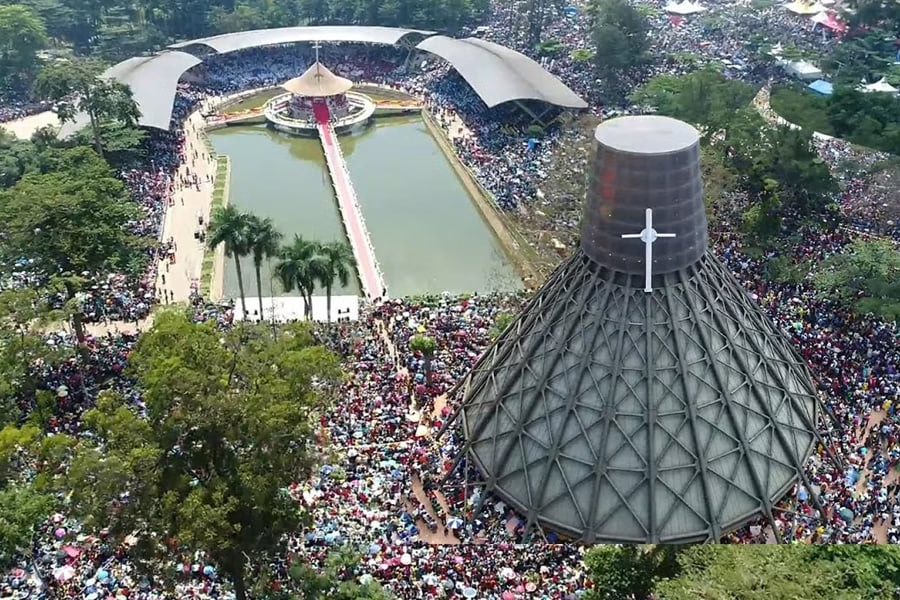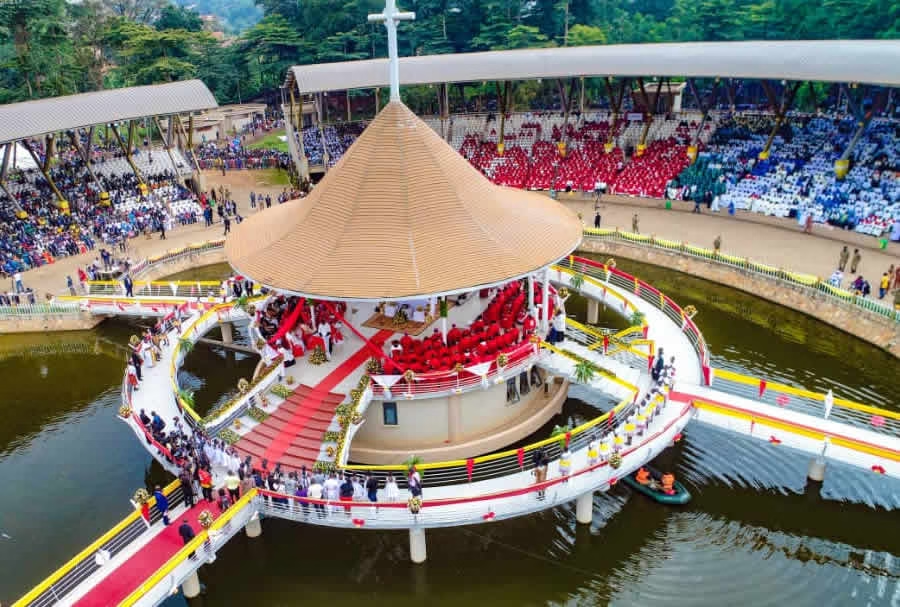Namugongo Shrine
Namugongo Shrine, just outside Kampala, is one of Uganda’s most significant religious and historical sites. It holds deep spiritual meaning for both Catholics and Anglicans. This site marks where 22 Ugandan martyrs died for their faith in the late 19th century. Their unwavering commitment to Christianity continues to inspire millions of Ugandans and visitors worldwide. Here’s everything you need to know about Namugongo Shrine and its significance.
Historical Background of Namugongo Shrine
In 1886, during King Mwanga II’s reign, 22 young Christians—mostly pages to the king—refused to renounce their faith. As a result, they faced execution. King Mwanga II saw Christianity as a threat to his authority. He ordered the martyrs to be burned alive in Namugongo. Their strong faith and sacrifice marked a turning point in Uganda’s Christian history. This event helped Christianity spread across the region. Today, their martyrdom remains a cherished part of Uganda’s religious heritage.
The Namugongo Martyrs Shrine: A Sacred Place
The Namugongo Shrine has two main areas: the Catholic Shrine and the Anglican Shrine. Both sites draw thousands of pilgrims each year, especially on June 3rd, Martyrs’ Day.
The Catholic Shrine is the larger of the two. It features a beautiful church, a chapel dedicated to the martyrs, and a monument engraved with their names.
The Anglican Shrine is also a revered site. It includes a smaller church and a memorial honoring the martyrs. The site also offers stunning views of the surrounding area.

Significance of the Shrine to Ugandans and the World
Martyrs’ Day
The most significant event at Namugongo Shrine is Martyrs’ Day, which is celebrated every year on June 3rd. This day honors the martyrs who died for their faith and attracts thousands of pilgrims from all over Uganda and beyond. People walk, sometimes for days, to reach the shrine, in a show of devotion and reverence.
Spiritual Importance
For Christians, particularly in Uganda, Namugongo Shrine is considered a sacred place of prayer and reflection. It represents a powerful reminder of the price of faith and the strength of the human spirit. Many people visit the shrine to pray for guidance, healing, and blessings.
Tourism
In addition to its religious significance, the shrine also plays an important role in Uganda’s tourism industry. Visitors from around the world come to pay respects to the martyrs and to learn more about the country’s Christian history.
The Shrine’s Architecture and Grounds
Catholic Shrine
The Catholic Shrine is a large, modern structure that features a beautiful church with high ceilings and intricate stained glass windows depicting scenes from the lives of the martyrs. The church is designed to accommodate large crowds, particularly during Martyrs’ Day celebrations. Adjacent to the church is a chapel dedicated to the martyrs, where pilgrims can offer prayers.
Anglican Shrine
The Anglican Shrine, while smaller, has its own charm and is equally significant. It features a simple, serene church, a statue of St. Peter, and memorials to the Anglican martyrs. The site offers a peaceful setting for quiet contemplation and prayer.
The Memorial Garden
Around the shrine are beautifully landscaped gardens, where visitors can walk, meditate, and reflect on the sacrifices of the martyrs. The gardens are often filled with flowers and lush greenery, offering a peaceful and tranquil atmosphere.
Pilgrimage to Namugongo Shrine
Visiting Namugongo Shrine is a spiritual journey for many, especially for those who participate in the pilgrimage on Martyrs’ Day. The walk to Namugongo is seen as an act of devotion, with pilgrims walking from all corners of Uganda to honor the martyrs. Some walk barefoot, while others carry crosses or chant prayers along the way. For many, it is a deeply moving experience that strengthens their faith and devotion.
How to Visit Namugongo Shrine
Location
Namugongo Shrine is located approximately 15 kilometers east of Kampala, the capital of Uganda. It is easily accessible by road from the city center, with taxis and boda-bodas (motorcycle taxis) available for transport.
Opening Hours
The shrine is open to visitors every day of the year, but the most significant time to visit is during the run-up to Martyrs’ Day in June. During this period, there are additional services and activities.
Accommodation
Visitors to Namugongo Shrine can find a range of accommodations in nearby Kampala, including hotels, guesthouses, and lodges, where they can stay before or after their visit to the shrine.
Things to Know Before Visiting Namugongo Shrine
Dress Code
As the shrine is a religious site, visitors are expected to dress modestly. This is especially important for those attending religious services or participating in the Martyrs’ Day celebrations.
Respectful Behavior
Pilgrims and tourists alike are asked to remain respectful of the sacredness of the site. Visitors should speak in hushed tones and be mindful of the reverence that the shrine represents.
Guided Tour
For those interested in learning more about the history of the martyrs, guided tours are available. Knowledgeable guides provide detailed information about the events of 1886, the martyrs’ lives, and their enduring legacy.
Tour the Namugongo shrine today.
Namugongo Shrine is not just a historical site; it’s a place of profound spiritual significance for Ugandans and Christians worldwide. The martyrs who gave their lives for their faith in the face of unimaginable persecution are remembered with reverence at this sacred location. Whether you’re visiting for religious reasons, cultural exploration, or simply to experience the serene beauty of the shrine, a visit to Namugongo is a powerful and moving experience.


